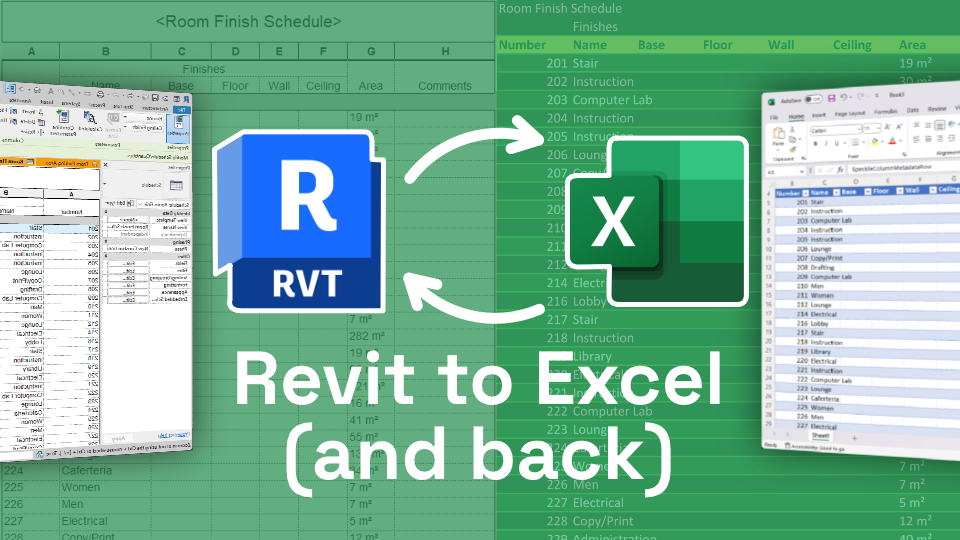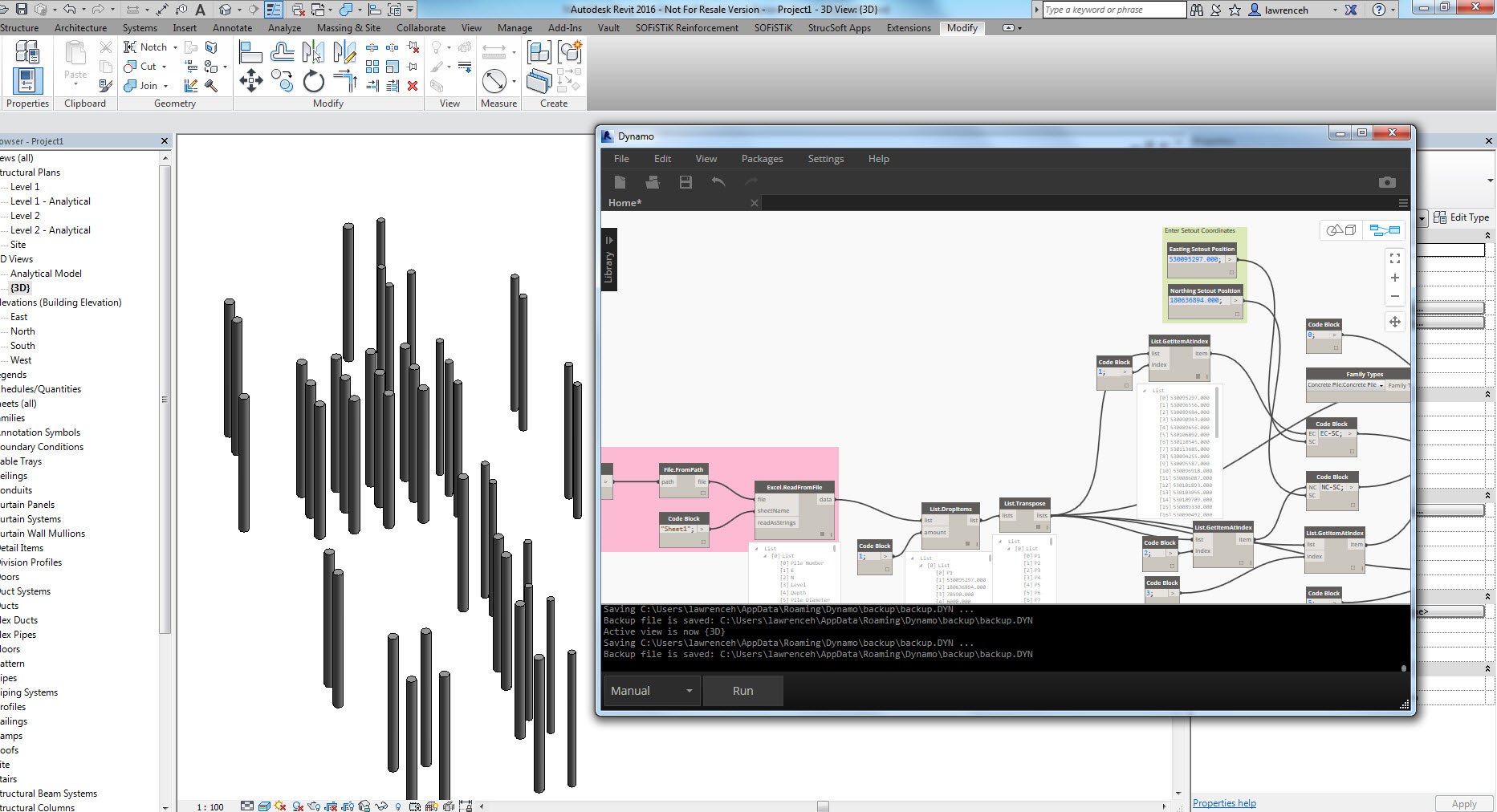Revit Tools: Your Secret to Accuracy and Productivity
Damaging Obstacles: Excel Importation Techniques for Advanced Revit Users
Are you a sophisticated Revit user seeking to take your abilities to the following level? In this post, we will certainly reveal you just how to break barriers by leveraging Excel for importation in Revit. Check out numerous data importation approaches and master Excel integration to enhance your Revit modeling capacities. With our tricks and tips, you can conquer importation obstacles and end up being a true professional in utilizing Excel for your Revit jobs. Obtain prepared to master your Revit journey!
Advanced Revit Users: Leveraging Excel for Importation
You can conveniently leverage Excel for importation as an innovative Revit customer. Excel is a powerful tool that can significantly improve your process and performance in Revit. With its ability to manage large amounts of data and perform complex estimations, Excel can be a valuable possession in managing and organizing your job information.
One means to utilize Excel for importation is by utilizing the "Link Excel" attribute in Revit. This function allows you to connect an Excel spread sheet straight into your Revit project, enabling you to upgrade and synchronize data between the two programs. This can be particularly beneficial when dealing with schedules or tracking changes in your task.
An additional way to make use of Excel is by utilizing the "Import/Export" attribute in Revit. This function permits you to import and export data between Revit and Excel, offering you the flexibility to deal with information in both programs. You can import information from Excel into Revit to produce aspects such as walls, spaces, or doors, and you can additionally export information from Revit to Excel for further evaluation or reporting.

Exploring Data Importation Techniques in Revit Using Excel
Checking out how to import data from Excel right into Revit supplies reliable techniques for integrating details. When you import information from Excel, you can seamlessly move information such as area routines, product checklists, and tools data right into your Revit task. This procedure enables you to save effort and time by staying clear of manual information entry.
To import data from Excel right into Revit, you can use the "Import/Export" function. This feature allows you to map the Excel information fields to the matching Revit specifications, guaranteeing that the details is appropriately assigned within the version. By choosing the ideal import alternatives, you can control just how the information is imported and just how it communicates with your task.
Another approach for importing data from Excel right into Revit is by utilizing Eager beaver. Dynamo is an aesthetic programs tool that integrates with Revit and enables you to automate tasks and process. With Dynamo, you can create custom-made scripts that import information from Excel and control it within your Revit job. This approach gives a lot more adaptability and customization choices.
Understanding Excel Integration for Advanced Revit Modeling
Understanding Excel integration for sophisticated Revit modeling involves utilizing effective techniques to perfectly move data and automate jobs within your project. By utilizing the power of Excel, you can enhance your Revit modeling workflow and save useful time. One crucial strategy is importing data from Excel spread sheets straight into your Revit model. This enables you to occupy specifications, such as room names or product quantities, easily. With a couple of straightforward steps, you can map the Excel columns to the equivalent Revit parameters and import the data precisely.
Another useful technique is exporting information from Revit to Excel. This allows you to draw out details from your model, such as routines or product amounts, and evaluate it in Excel using formulas, charts, or various other effective tools. By leveraging the capacities of Excel, you can perform complex computations, produce customized reports, and gain valuable understandings into your job.
In addition to data transfer, Excel assimilation can automate repeated jobs in Revit. By developing macros or manuscripts in Excel, you can automate procedures like creating sights, producing sheets, or using common family members - revit plugins. This not just conserves time however likewise makes sure consistency throughout your project
To understand Excel integration in Revit, it is check my site important to understand the data structure and exactly how Revit engages with Excel. By familiarizing yourself with the readily available devices and strategies, you can unlock the complete capacity of Excel assimilation and take your Revit modeling to the next level.
Overcoming Importation Obstacles: Excel Techniques for Revit Professionals
When getting rid of importation obstacles, it's important to be familiar with reliable Excel strategies that can benefit experts in Revit. As an advanced Revit user, you comprehend the relevance of effortlessly importing information from Excel into your jobs.

Another beneficial technique is using the "Transpose" feature in Excel. This allows you to convert data from rows to columns or vice versa. When importing information into Revit, this can be specifically helpful when you have information in a vertical format in Excel, yet you require it to be in a straight layout in Revit.
Additionally, making use of Excel formulas such as VLOOKUP and INDEX-MATCH can substantially help in mapping data from Excel to Revit. These solutions allow you to browse for specific values in Excel and recover corresponding data from one more column. When importing large datasets into Revit., this can conserve you time and effort.
Excel Information Importation Advice for Advanced Revit Users
By familiarizing on your own with reliable Excel techniques and pointers, you can improve your data importation procedure as a sophisticated customer of Revit. Excel is an effective device that can greatly help with the importation of information into Revit, saving you time and raising your productivity. One useful pointer is to use the "Text to Columns" attribute in Excel to separate data right into various columns based upon a delimiter. When you have information in a solitary column that needs to be divided into multiple columns in Revit, this can be particularly practical. Additionally, making use of Excel's "Paste Special" feature permits you to paste data from Excel right into Revit while keeping format, such as cell color or font style. This can be especially helpful when importing information that needs certain formatting in Revit. Another valuable method my blog is to make use of Excel's "Replace and locate" function to rapidly make adjustments to your data click to read prior to importing it right into Revit. You can conveniently change certain text or characters with others, saving you the time and initiative of manually modifying the information in Revit. By utilizing these Excel pointers and methods, you can enhance your data importation process and become a lot more efficient in using Revit.
Final Thought
You have actually currently learned valuable techniques for importing information from Excel right into Revit as an innovative individual. Go ahead, break those barriers and stand out in your Revit projects!

When importing information into Revit, this can be specifically helpful when you have data in a vertical format in Excel, but you require it to be in a straight layout in Revit.
In addition, using Excel solutions such as VLOOKUP and INDEX-MATCH can substantially assist in mapping information from Excel to Revit. Furthermore, using Excel's "Paste Unique" attribute permits you to paste data from Excel right into Revit while preserving formatting, such as cell color or font design.